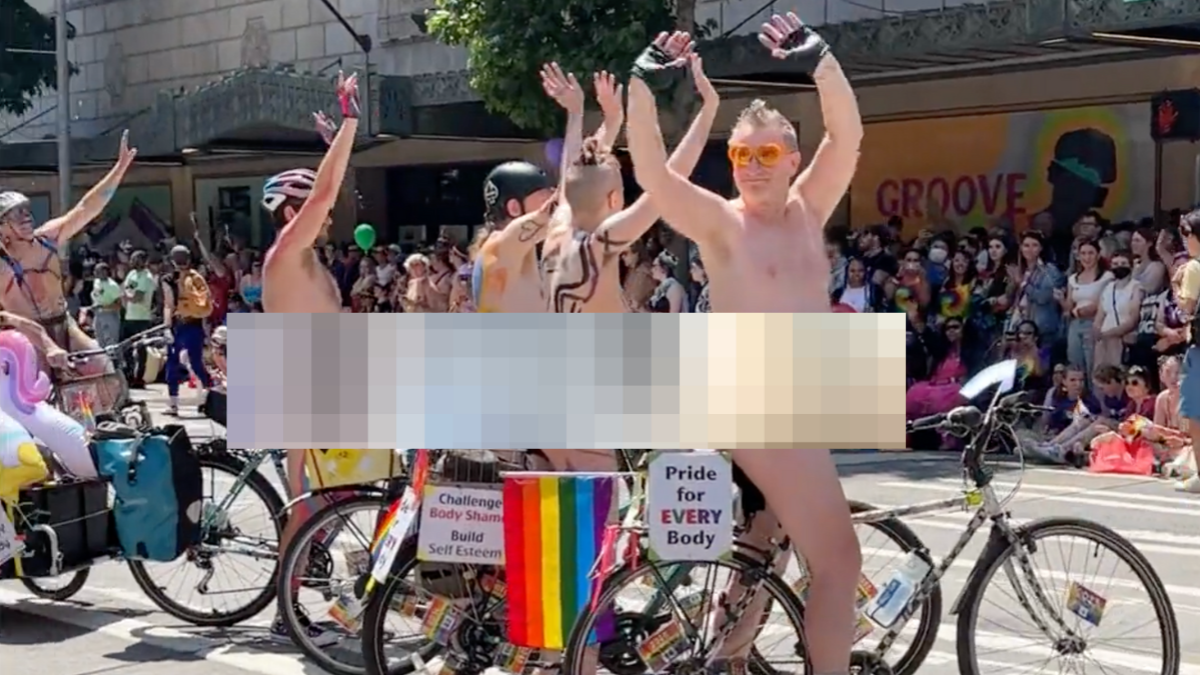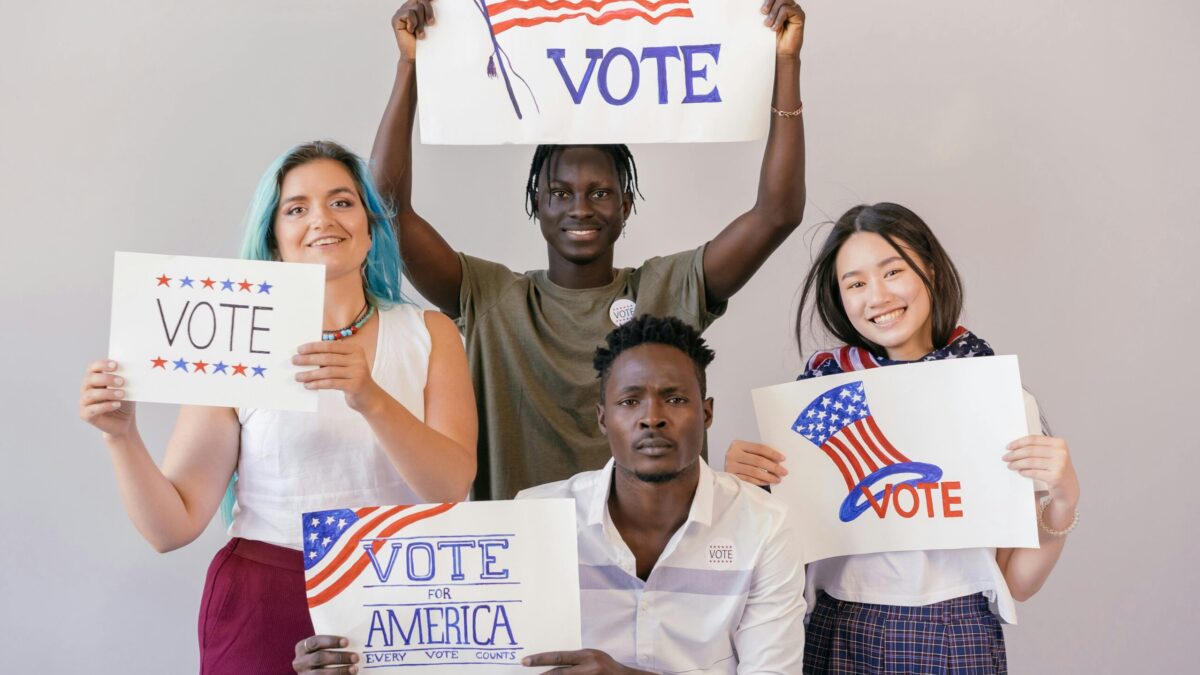
MINNEAPOLIS, Minn. — The intersection in south Minneapolis where George Floyd died in police custody on May 25 has become a quasi-religious shrine. It is a shrine not just to Floyd, who is honored here as if he were a saint or a martyr, but to the political power of the Black Lives Matter movement and the ascendency of the radical left in this city.
The intersection and the neighborhood around it have been “occupied” for months now. To get to the memorial—or “George Square,” as it’s now called—you must approach on foot. For a block in every direction, the streets are closed to traffic, barricaded by concrete roadblocks and makeshift chevaux de frise. Behind the roadblocks, plywood shields are stacked up next to a tent and an outhouse.
A young man in a pink sweater and green hair greets me as I approach. He informs me that it is Indigenous Peoples Day (formerly Columbus Day), and that there is a healing circle for indigenous peoples underway at the intersection next to the memorial. I am not allowed to take pictures of them, he says. By what authority he orders me not to take pictures, he doesn’t say. So I take pictures.
The memorial itself is a 15-foot black fist erected in the middle of the intersection of East 38th Street and Chicago Avenue, festooned roundabout with flowers and signs and graffiti and flags. Every conceivable surface, from the streets and sidewalks and light poles to the buildings and bus shelters and the abandoned Speedway gas station on the corner, is covered in graffiti and posters and overlapping murals.

The whole intersection has an apocalyptic feel. Firewood is stacked up around the gas pumps for use, I’m told, by the steady stream of “people experiencing homelessness” who often “occupy” the intersection at night. Every smashable window is boarded up, and every board bears some spray-painted curse directed at the police or Trump — and if not a curse, a call for justice in the name of Floyd.
The scene recalls nothing so much as the shrines one sees in Mexico and Central America to Catholic saints or the Blessed Mother or the honored dead, with the crucial difference that here the shrine is marked not by reverence but by simmering rage. Justice, not peace, is what pilgrims to this secular shrine seek — and not justice from God, but by their own hands.
One of the thousands of signs and placards posted about the square reads: “Reconnect, this is a place of peace.” But it is not a place of peace. It is a place of tension and racial resentment and suffocating progressive orthodoxy. It’s the kind of place where you don’t want to be seen asking too many questions.
The businesses at this intersection have been all but destroyed. Cup Foods, the convenience store where a teenage clerk called 911 after Floyd tried to pass a fake $20 bill, and where he later died, didn’t reopen until Aug. 3. The store’s owners tried to open in June a few weeks after Floyd’s death but quickly closed amid backlash from activists and a self-appointed “security force” from the neighborhood.
One of the store’s co-owners, Mahmoud Abumayyaleh, is behind the counter on the phone when I walk in. After getting death threats, he now wears a gun and employs an armed security guard at the store, which has been a neighborhood staple for the past 30 years. Abumayyaleh and his brother, Samir, own the entire building, which also includes a barbershop, a laundromat, and a mosque.
But some activists and agitators want the immigrant-owned family store to shutter for good. A man who works at the Chinese takeout place across the street tells me that “a lot of people hate that guy” for calling the police on Floyd, and that he tries to stay away from there. “They do our thing and we do ours.”
Plenty of customers have also stayed away, and business has suffered terribly. An older black man behind the register at Cup Foods tells me it’s been very slow, partly because there’s no traffic coming through the intersection now and partly because some people are afraid to come. And no wonder: when the Abumayyaleh brothers reopened in August, a mob formed outside demanding they stay closed.
The misfortune of Cup Foods is worth noting because its fate, while perhaps uniquely tragic given the circumstances of Floyd’s death, has become commonplace in Minneapolis. This city has suffered from the one-two punch of widespread rioting and pandemic shutdowns that afflicted other large cities over the summer, but it has not really recovered.

Minneapolis was the last stop on a recent reporting trip that took me and my colleague, Christopher Bedford, across Michigan and Wisconsin, talking to voters, business leaders, and local elected officials about the upcoming presidential election. But here in downtown Minneapolis, there were fewer people to talk to. A shocking number of bars and restaurants are closed, buildings are boarded up, and, on the night we get into town, the streets are eerily empty — except for a lone man on a unicycle pedaling up South 6th Street, adding to the unsettling feeling of an old Marilyn Manson music video.
Our hotel was a case in point, a Marriott Signature with more than 180 rooms. Only three were booked, including ours. Because of COVID, there were only two employees at the hotel, one at the desk and one in the kitchen making pizzas. The bar was closed, the lobby was quiet and empty.
At Murray’s, a steakhouse that’s been in business since 1946 but today is limping along, mostly empty, the bartender told us things have been slow. We’re the only people in the bar. He says it’s not just the pandemic that’s cleared out downtown but all the protests and riots, too.
In late August, riots came right down this street. He points to the Starbucks across the way, where rioters smashed all the windows. They were only replaced last week. The Saks Fifth Avenue right next to it was looted. “There’s so little trust in the police now, and so many problems,” he says, then adds cautiously, “But not all of it was justified.”
No kidding — especially not in this case. What triggered the riots wasn’t a fatal police shooting or other police violence but an apparent murder-suicide. On Aug. 26, a black man who was suspected of homicide killed himself as police were closing in.
In an effort to prevent rioting, the Minneapolis Police released a surveillance video of the incident within 90 minutes showing that police officers were not involved in the use of deadly force. No matter. The downtown area near where the man committed suicide erupted in a fresh round of riots and looting, the city declared a curfew and called in the National Guard, and about 50 people were arrested that night.
From Murray’s, we have to walk more than a mile, crossing over the river, to find another bar that’s open. There we meet a bartender who tells us he’s “center-left” but plans to vote for Trump, as do many of his friends. It wasn’t hard to empathize with him. His bar was nearly empty, surrounded by shuttered establishments. It’s been that way for months now.
It’s unclear how Minneapolis will recover from nearly a half-year of rolling riots and shutdowns. With confidence in public safety shattered, residents are hesitant to venture out. The city’s once-bustling downtown nightlife — theaters and clubs and sporting events—is more or less gone. Dozens of homeless encampments have cropped up in high-visibility areas and public parks in response to the pandemic. One of them, in Powderhorn Park not far from the George Floyd memorial, was forcibly cleared by police this summer after hundreds of tents went up and the city declared the area unsafe for habitation.
None of this augurs well for Minneapolis’ future. As I leave the George Floyd memorial I walk back past the roadblock. The green-haired man is talking with a young boy, maybe eight years old, who says he had a toy police car when he was five. “I know the signs say ‘f-ck the police’ now,” the boy says. “But I liked the police back then.” The green-haired man laughs and replies, “Don’t worry! You were only five, you didn’t know any better.”









